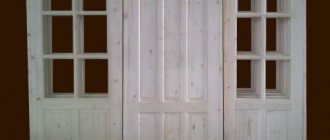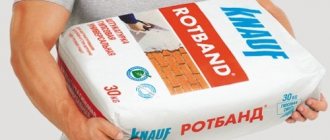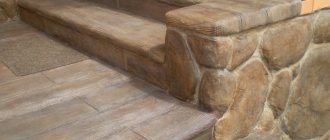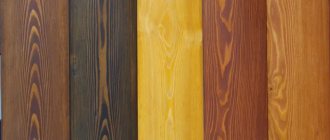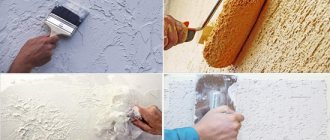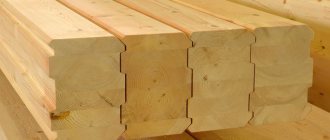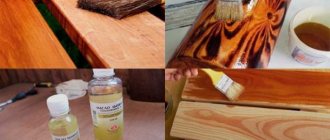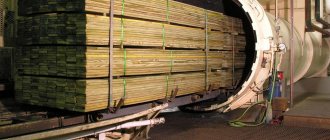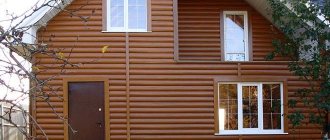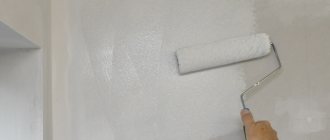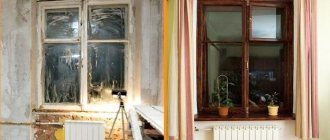In accordance with current fire safety standards and regulations, fireproofing of wooden structures at facilities for any purpose: residential, civil and industrial. This measure is part of a set of necessary actions to ensure fire safety of people and property. If previously the requirement applied only to large buildings and structures, now it also applies to private houses. Without such treatment, buildings cannot be put into operation after construction, or decommissioned by the commissions of the Ministry of Emergency Situations. Such measures were taken to reduce the number of fires.
Why fire retardant wood treatment is so necessary
This is a measure that helps to significantly reduce the natural flammability of materials. It is used in the construction of private and large apartment buildings, the construction of which contains wood. This artificially increases the fire resistance of the material.
Dangerous!
Includes activities:
- creation of special non-flammable coatings for cladding the surface of building structures using fire-fighting materials;
- covering individual elements having a different composition with a protective layer;
- increase in the general fire protection properties of buildings due to refurbishment.
The developer makes the decision to carry out the treatment in advance at the design calculation stage. After completion of all work, upon delivery of the finished object, its fire protection will be checked.
Important! Such checks will be carried out periodically. Control of buildings where many people constantly live or spend time must be carried out according to a pre-approved schedule. This applies to residential buildings, shopping centers, office buildings, etc.
Regulatory acts governing fire retardant treatment of wooden structures
Fire retardant treatment of wooden structures: frequency of implementation
Fire prevention treatment is a necessary event that must be carried out in accordance with the regulations of regulatory enactments. All rules are reflected in:
- Decree of the Government of the Russian Federation No. 390 of 2012;
- GOST R 53292.2009;
- Decree of the Government of the Russian Federation No. 113 of 2014;
- SNiP 21-01-97.
Note! The frequency of inspections of already processed objects is also indicated there; this happens every year.
The content of SNiP 21-01-97 adopts the specification of various building materials according to the degree of their combustibility, flammability, toxicity and smoke formation.
| Flammability (according to GOST 30244-94 (11)) | Flammability (according to GOST 30402) | Toxicity (GOST 12.1.044) | Smoke formation (according to GOST 12.1.044) |
| G1 - weak G2 - moderate G3 - normal G4 - strong | B1 - difficult to flammable B2 - moderately flammable B3 - highly flammable | T1 - low hazardous T2 - moderately hazardous T3 - highly hazardous T4 - extremely flammable | D1 - low degree D2 - moderate degree D3 - high degree |
It is also important to consider the spread of fire.
Standardization occurs in accordance with GOST 30444 (R51032-97) standards. It also regulates all methods for checking the active spread of fire covering the surface layers of buildings. Note! The standard specifies four classifications based on the critical value of the total heat flux density.
According to regulatory requirements, treatment with the use of protective compounds must be carried out for any buildings that have wooden elements in the structure. It is necessary to treat ventilation ducts, air conditioning systems, external roofing (including attics), fabrics, metal structures, housings of all fire dampers and other parts of the premises, because anything can catch fire. Moreover, some substances burn very quickly.
Increased attention should be paid to objects of category 1. These are educational (schools, universities, kindergartens) and medical (hospitals, medical centers, clinics) institutions. Identical processing requirements apply to other places where people gather and stay for a long time: shopping centers, cafes, cinemas, cultural centers, restaurants, etc.
How the work is carried out
Fire retardant treatment of wooden structures includes the following operations:
- applying protective compounds to structures: impregnations, paints, varnishes or mastics;
- checking the quality of fire retardant treatment;
- preparation of documents based on the results of the inspection.
All responsibility for the work and its quality falls on the owner of the building, therefore, in order to avoid questions from supervisory authorities, it is advisable to use the services of professionals. They will be able to conduct an audit of premises and buildings, select adequate materials for a specific facility, calculate surface areas and volumes of protective compounds, and determine the optimal technology for performing the work. The customer will only have to sign the estimate and contract, wait for the work to be completed and receive a full package of documents. Having such significant evidence in hand, the owner is guaranteed to be free from claims from inspection authorities.
Processing a finished log house
Which wood surfaces should be treated with fire protection?
Safety precautions when working with wood
To impart the necessary protective properties to wooden products, they are coated with different compounds. Their basis is water. The procedure is inexpensive; owners of private houses can hire specialists individually. The team will come to treat the premises as a whole, taking into account all its components. In addition to the fire-resistant substance, other compounds should be used.
Note! For example, biological protection that prevents the further appearance of fungi and dangerous mold.
Specialists will treat the following wooden structures with a fire retardant compound:
- attic spaces;
- floorings, panel boards;
- scenes;
- pallets;
- individual interior items;
- structures standing on evacuation routes;
- veranda decking;
- attics;
- load-bearing walls;
- scaffolding.
Important! It is worth covering all parts of the structure, this will improve the overall safety of the building and people.
Processing process
Operating principle and overview of types of OS for wood
A representative of an organization providing such services examines the object. It identifies surfaces that need fire protection. Owners building private houses usually invite such specialists separately. You should choose licensed companies operating in accordance with GOST standards.
External fire escape: requirements of SNiP PPB for buildings
The product with which the structure will be coated is selected based on the material from which the structure is assembled. Substances must:
- be effective;
- ensure a high and long-term level of fire resistance in accordance with all fire safety standards;
- have certifications confirming their quality;
- be low consumption, technologically advanced;
- match the type of working surface;
- have some decorative properties;
- provide for further application of paint and varnish on top.
Note! The finished protective layer retains all useful qualities for 10 years, this is the usual warranty period. You should call a technician later to repeat the procedure.
There are many protective agents, all of them are divided into two functional groups: coatings and impregnations.
Fire protection methods for wood: from classic, time-tested to modern.
| Name | Operating principle |
| Wet plaster | It generously covers the wooden parts of buildings. After waiting for drying, the load-bearing parts (pillars, columns, curtains/partitions) find themselves in a fire-resistant shell. It prevents fire and heat, not just once, but constantly. Therefore, stoves were covered with plaster. |
| A proven, simple and reliable method, although archaic and labor-intensive. Plus it requires periodic updating, because the plaster breaks off in pieces. | |
| Fire retardant coatings, mastics, pastes | A modern interpretation of classic wet plaster. Lime was replaced with a non-flammable binder - water with fillers (clay, salt, vermiculite, superphosphate). |
| The material is applied to the surface with a trowel/trowel. The finished result looks rather rough, so it is suitable for non-residential warehouses, garages and sheds. GOST 25130-82, adopted in the USSR, is in force. | |
| Facing | An effective method of protection. Natural stone, ceramic tiles or decorative brick are used. They are carefully attached to the protected surface. It looks beautiful from the outside. |
| Pros - the fire resistance limit is significantly increased, it looks beautiful, is universal, and will complement any design. Disadvantages: expensive, heavy weight of the structure, difficult to protect small geometric elements. As a result, the volume of premises decreases. | |
| Enamel, paint, varnish | Modern technique. A thin layer of protective agent is enough, and the wood will be protected from smoldering, exposure to elevated temperatures, and open flames. The external structure is completely preserved. Such materials can be used for any item, even small ones. |
| Pros: ease of use, large selection, availability of additional properties. Cons: high cost. | |
| Impregnation with special protective compounds | The most popular method now, it is used by construction companies and manufacturers of various wood products. The principle of fire-prevention wood treatment is coating the structure with an aqueous solution of salts (fire retardants). There is a distinction between superficial and more complex deep impregnation. The first one is used more often. Apply the product to the wood using rollers, brushes or a sprayer. Then the master waits a certain time until the composition is absorbed. The second is more difficult - you need impregnation baths or autoclaves. They are filled with the composition and the objects being processed are immersed there. |
| Pros: deep impact, allowing you to cover the internal structural part. This increases fire resistance. Disadvantages - the procedure is long, expensive and requires equipment (deep impregnation). |
Types of fire fighting equipment
Facilities
First of all, these are proven over decades of use in the USSR/RF, but are still successfully used, including simply under other names:
- The fire retardant composition for surface impregnation is “MS”, for deep impregnation – “MS 1:1”.
- For surface – “PP”, as well as “VIM-1”, “BANN 1”.
- The general composition of all is approximately the same - various salts, mostly “dual-use”, since their “main job” is mineral fertilizers + various industrial surfactants used for better adhesion/penetration into wood, as well as dyes.
A little later, during perestroika and after it, a huge number of new trains appeared. Not only industrial companies that traditionally produced paint and varnish products, but also companies that set the goal of becoming leaders in the new market of fire retardant materials began to engage in scientific development and implementation with lively advertising.
Thus, names appeared that were familiar to almost everyone who was involved in fire protection work. At least in your home/dacha for treatment, for example, a bathhouse, which was fashionable at one time; and many protective agents for this purpose successfully combined, at least at the level of advertising of finished products, not only the fight against fire, but also against mold, rot, aging/darkening, and insect pests of wood; improved, tinted, painted in colors that are pleasing to the tired eyes of the buyer/owner. Here are some of them:
- "KSD";
- "Attik";
- "Pirilax";
- "Old Elm";
- "OZK-45D";
- "Claude-01";
- “Pyrex”, “Ograx” and dozens of other brands of fire retardant compounds, including varnishes, paints, coatings, enamels, it’s impossible to list everything, because as soon as they were not named by manufacturers, they often had a recipe that was not much different from the good old “MS” and "PP".
An interesting detail: developed for a huge country with its distances, compositions under the brand “made in the USSR” were produced in dry form in bags, anticipating the advertising slogan “just add water” by decades, but new ones mainly appeared in the form of aqueous solutions in plastic containers from 1 l. Why this was done - no explanation needed.
At one time, fire-retardant paint and varnish products even poured into the Russian market from abroad from the famous concerns of our sworn friends. But their happiness was short-lived, since the declared “fabulous” quality, in fact, was not much different from domestic goods, and the cost was too high for mass consumption, for example, in construction. Today their market share is completely negligible.
It should be noted that wood antiseptics and fire protection by themselves, as a rule, do not add. With the exception of recipes/mixtures of substances specially developed by chemical scientists, called fire-retardant compositions/coatings, which must be indicated both in the technical data for commercial products and in advertising materials about them.
Criteria for choosing a fire-fighting composition
The main rule is that the quality of the selected composition must 100% comply with the requirements of GOST for fire protection. You cannot be guided by the color of the packaging, price or manufacturer.
Other criteria are needed:
- Fire resistance level. The most effective protective agents are mastics and special pastes. Their shortcomings will give the surface an unassuming appearance. Better suited for processing warehouses, sheds and technical rooms.
- Weather resistance. It is especially important when choosing a composition for the external facade, load-bearing walls, roof and attic. Weather-resistant synthetic paints and varnishes are suitable. Water-soluble impregnations must be applied to internal surfaces.
- Aesthetics, decorativeness. Protective varnishes have this advantage. They look invisible, preserving the original natural appearance of the wood and its structure. You can take fire retardant paints.
- Fire protection group. This indicator is always indicated by the manufacturer on the outside of the product packaging.
- Best before date. You should only take fresh, not expired compounds.
- Total expense of the product. Also indicated by the manufacturer.
- The frequency of the procedure may vary, depending on which product the consumer chooses. If the packaging does not indicate specific dates, such processing will have to be carried out annually.
Important! It is worth choosing funds after consulting with a specialist, or it is better to invite a specialist in carrying out such events.
Types of products
Features of confirming the conformity of fire protection means (Base: Article 150, Federal Law 123)
- Confirmation of conformity is carried out in the form of certification.
- To carry out certification, the applicant submits accompanying documents indicating: main indicators,
- areas and methods of using fire protection products.
- names of fire protection means;
Currently, there are many fire retardant compounds for processing wood and products made from it. The set of rules SP 64.13330.2011 (previously Fire Safety Standards NPB 251-98) recommends using only compositions of fire retardant efficiency groups I and II as fire protection for wood.
This recommendation is based on the methodology for practical testing of samples to establish the fire-retardant efficiency group of the composition as part of certification tests. The fire-retardant efficiency is determined by the weight loss of the protected sample under standard test conditions, while:
- if the weight loss is less than or corresponds to 9% - I group of fire-retardant efficiency
- if the weight loss is more than 9%, but less than or equal to 25% - group II fire-retardant efficiency
Stages of work execution
The process of treating wood with a fire-fighting composition consists of the following steps:
- Selecting favorable weather conditions if work is performed outdoors.
- Cleaning surfaces. You need to wipe them, removing unnecessary objects, dirt and accumulated dust.
- Measuring material moisture. Then, according to the data obtained, the total absorbency of the surface will be calculated, as well as the time required for its complete drying.
- Applying a layer of protective agent. If necessary, wait until the first layer dries and apply the second.
Important! Over time, any protected object will lose its useful properties. Testing is required to track this.
Nuances of the procedure
Who can do the work
A representative of a licensed company that carries out such orders. Permission to such companies should be issued by the Ministry of Emergency Situations, which will confirm the professionalism of the organization and its employees. In their work they are guided by regulations relating to fire safety.
You should not carry out the processing yourself, especially on a complex large object where there are metal and wooden parts. You may have to use different materials for them.
Frequency of work
Any fire retardant coating has its own validity period, during which it retains its properties. As time passes, the effectiveness of the qualities decreases, and wooden and metal structures again become vulnerable to fire. Therefore, after the expiration of the period, the surfaces must be re-coated with compounds. According to regulatory requirements, work is performed at a certain frequency. The time during which the compositions retain their qualities is indicated in the documentation:
- funds have different terms depending on the type and purpose, but not more than 10 years;
- compositions for metal structures – up to 20 years;
- If the documentation does not indicate the timing, then re-coating must be carried out once a year.
This requirement is established by the Decree of the Russian Government. Re-application of the protective material is carried out if damage is detected during the quality check of the fire retardant treatment. Violations of this regulation are fraught with sanctions from inspection authorities, up to and including decommissioning of the facility.
Video:
Fire protection test
This should be done properly by the Ministry of Emergency Situations employees. When the test period approaches, the owner calls them. In practice, specialists from the Ministry of Emergency Situations rarely come because they are busy, so people resort to the help of representatives of third-party organizations.
You can do it yourself using fire inspectors' methods, for example, making a small cut (1 mm thick) in wood impregnated with a fire-resistant agent and carefully setting it on fire. If the material is processed efficiently and has retained all its qualities, the cut will not catch fire. Private or professional inspections must be carried out every 2 years.
Verification Process
List of documents provided upon completion of fire protection work
The result of the procedure must be documented. The name of the performing organization, the type of work, a description of the materials used, and the date of completion are indicated. They should be preserved.
List of documents:
- act of ordering and acceptance of completed work;
- certificates for all fire retardants used;
- license of the organization that provided the service;
- invoice (needed by legal entities);
- an expert opinion confirming that the procedure meets all requirements of the industrial safety regulations (provided separately if the client wishes).
Important! The contractor provides his own guarantee, the duration of which depends on the type of fire-resistant compounds.
Wood is a natural flammable material that requires additional protection. It doesn’t matter whether the whole house or individual parts of the building are built from it. Fire retardant treatment is a necessary measure, the implementation of which guarantees the prevention of fire. It should be repeated periodically following the instructions of GOST and the manufacturer.
Increasing the fire hazard class of structures. Quality control. Recommendations SP 64.13330.2011.
Increasing the fire hazard class to K0, K1 of wood structures is carried out only through the use of fire protection means.
The real fire hazard class of a structure or structural element can be determined only by conducting fire tests in accordance with GOST 30403.
For fire retardants with a specified duration of fire retardant treatment of more than a year, aging resistance tests must be applied. When monitoring the quality of work performed, the condition of the protected surface (absence of defects, damage), compliance with application technology, and quality assessment of processing are checked.
